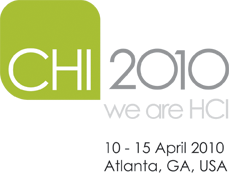CN18: Practical Statistics for Usability Testing
Quick Facts
Time: Wednesday, 14 April 2010, 14:30 to 18:00Units: 4
Organizers: Jeff Sauro
Benefits
If you don’t measure it you can’t manage it. Usability analysis is about more than rules of thumb, good design and intuition: it’s about making better usability decisions with data. Is Product A faster than Product B? Did we meet our goal of a 75% completion rate? Learn how to conduct and interpret appropriate statistical tests on small-sample usability data then communicate your results in easy to understand terms to stakeholdersAudience
Open to anyone who’s interested in quantitative usability tests. Participants should be familiar with the process of conducting usability tests as well as basic descriptive statistics such as the mean, median and standard deviation and has access to Microsoft Excel.Origins
This course was given at the Usability Professionals’ Association 2009 and HCII 2009 and is based on material from measuringusability.com.Features
- Be able to compare two interfaces or versions (A/B Testing) by showing statistical significance (e.g. Product A takes 20% less time to complete a task than Product B p <.05).
- Determine if a usability test has met or exceeded a goal (e.g. users can complete the transaction is less than 2 minutes).
- Clearly understand both the limits and data available from small sample usability data through use of confidence intervals and inference
- Communicate quantitative results visually, numerically and in English to stakeholders
Instructors
Jeff Sauro is a Usability Engineer and statistical analyst with over a decade of experience conducting quantitative usability and statistics analysis for Oracle, Intuit, PeopleSoft, PayPal, Sage Software and General Electric. Jeff has presented and taught courses at CHI, HCII, HFES and UPA. He was recently the guest editor for Interactions Magazine dedicated to Quantifying Usability. He holds a Masters from Stanford University from their school of Education specializing in teaching quantitative concepts.
His teaching style is to work backwards from practical problems that the usability practitioner is likely to encounter when quantifying usability. From these problems he takes actual usability data and shows how to make better decisions with numbers.



